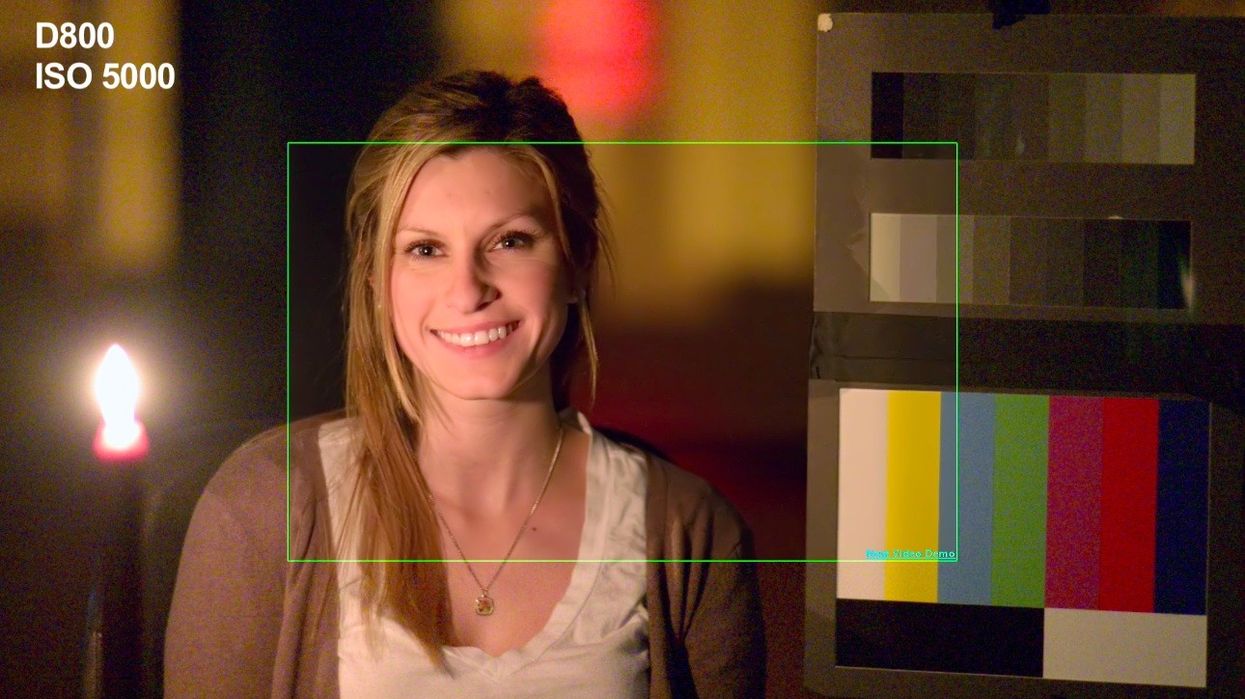5D Mark III/D800 Hands-On Part 5: Mark II vs. Mark III vs. D800 - Candlelight Revisited

The candlelight test that got an enormous amount feedback has returned. After a bit of a delay between this one and the last one (thanks in part to the craziness that is NAB), I thought it would make sense to really level the playing field between the two cameras since the exposure for the D800 is slightly brighter at equivalent ISOs. I've also done a little bit of color correction and noise reduction, and the results are certainly interesting compared to the last video. The test is embedded below, but be sure to go to Vimeo and download it in 1080p for the highest possible quality.
Candlelight Revisited:
The last test confirmed what many had suspected, that the D800 was not going to be a low-light winner. What wasn't expected was just how bad that camera was going to fare compared with the 3-years-older Mark II. It's clear that Canon is doing hardware noise reduction based on the noise patterns and the fact that the cameras had their noise reduction settings turned off. They have seriously improved the hardware noise reduction in the Mark III, and for that feature alone, it might be worth a purchase for some people.
But what about the D800 with noise reduction? I think it's a whole different game. Comparing the cameras at a similar exposure level didn't really change my opinion, but applying the noise reduction definitely put all the cameras at a more equal playing field. The additional dynamic range of the D800 does not explain the difference in exposure, as the D800 adds a lot of that latitude in the shadows. Canon and Nikon are not rating their cameras exactly the same, and it was mentioned to me at one point that the ISO standard allowed them to be 1/3 of a stop different. For the most part, it seems like the difference is somewhere between 1/3 and 2/3 of a stop. It never actually goes as far as being a full stop different -- the closest it gets is at the very lowest ISO settings.
Either way, noise reduction makes the D800 perfectly usable at ISO 2500, and you can see from my tests that ISO 2500 on the Nikon has a similar exposure between ISO 3200 and ISO 4000 on the Canons. I don't think the D800 is a camera that should have all of its noise reduction done in post. While doing it in post certainly gives you more control, Nikon has actually developed advanced noise reduction techniques that are specific to their own noise pattern. As far as the noise patterns go, the Nikon certainly looks the most like film grain. To me, noise is noise, but when it comes to removing it, a clean pattern with defined noise can actually be easier to remove than a blotchy pattern that already has hardware noise reduction applied.
If you're going to use the D800 for video, recording out of the HDMI will give you the best chance of getting clean noise. I was using the demo version of Neat Video in my test, but it still proved to be exceptional. I'm not as well versed with the program, so my settings were not perfect, but I think you'll be hard-pressed to find a better program out there for noise reduction. I purposely set the reduction and sharpening as high as possible to compare the cameras fairly, but with the D800, too much reduction causes unattractive splotchy noise in the frame -- so your own mileage might vary according to how well you know the program and what level of noise you're willing to accept.
The Mark III still has the cleanest signal, and 6400 is remarkably clean, but if you apply some in-camera noise reduction to the D800, and possibly some in post, the differences are less dramatic up to around 3200. The D800 still won't be able to compete with the Mark III in low-light, but you should be able to get similar results as the Mark II if you're careful about what settings you use.
One thing is clear, the signal recorded from the HDMI of the D800 at lower ISOs is one of the cleanest I've ever seen on a DSLR. There's no doubt that these are all capable cameras with various positives and negatives. The D800 won't be able to shoot in no-light situations without a little noise, but the Mark II and the Mark III have lower resolved detail and color channels that are not nearly as clean.
So why might we still care about these cameras when we've got something like the Blackmagic Cinema Camera coming out in a few months? There is an indescribable feeling to the image coming from a full frame sensor. The Blackmagic camera will undoubtedly deliver superb dynamic range and resolution, but it will never be able to capture the magic that you can get from shooting at ISO 6400 under almost no light, at f/1.4. That doesn't mean it won't be a viable camera and have its place (really it can't come soon enough), but these full frame cameras utilize full frame lenses in a very different aesthetic way. There are plenty of cheap full frame lenses to be had, but you'll only ever see their full potential from these Vista-Vision sized sensors.
There is at least one more test video to come, but if you're already sick of them, you can certainly watch some shorts instead!
Links:
All Parts of the Mark III/D800 Review
Part 1: 5D Mark III/D800 Hands-On: Initial Impressions (Mark III)
Part 2: 5D Mark III/D800 Hands-On: Initial Impressions (D800)
Part 3: 5D Mark III/D800 Hands-On: ISO Range Test
Part 4: 5D Mark III/D800 Hands-On: Mark II vs. Mark III vs. D800 - Candlelight











